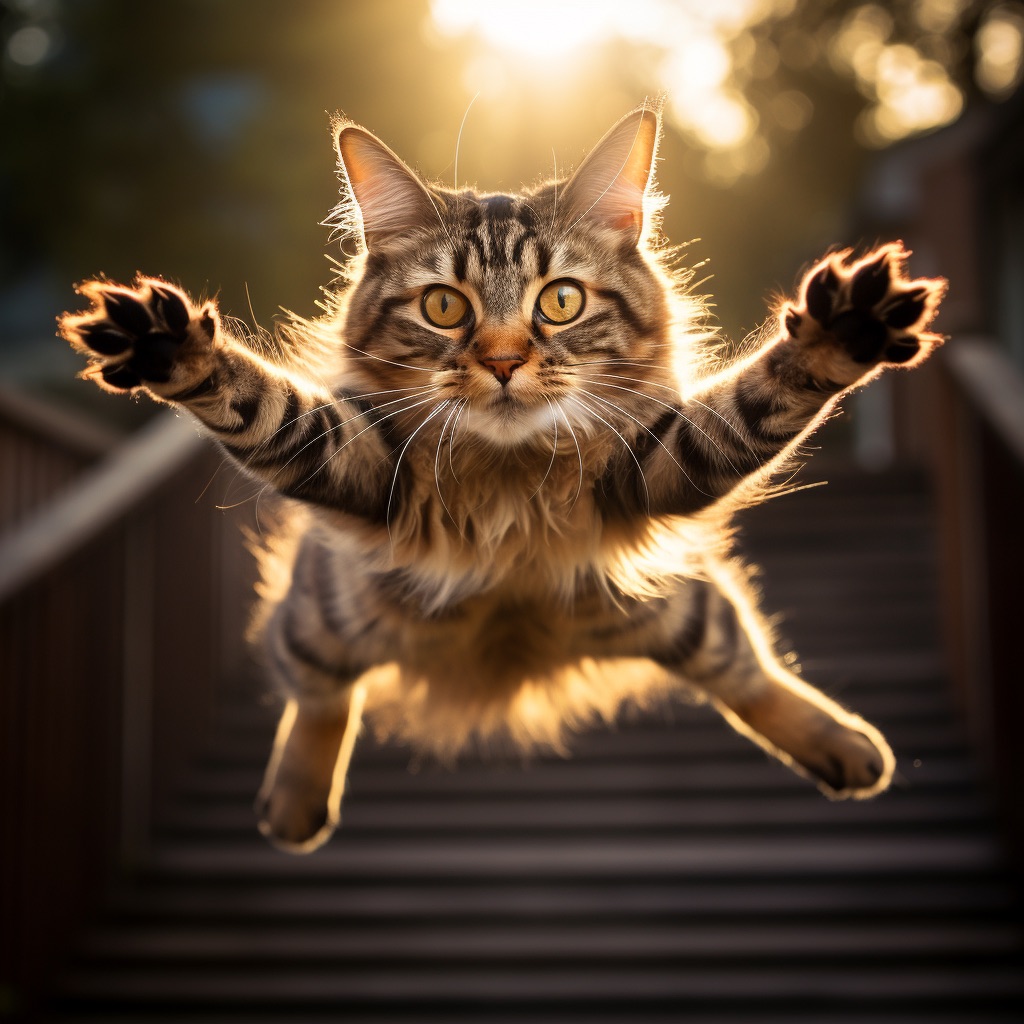
Table of Contents
Introduction
As a cat owner, you want nothing but the best for your furry feline friend. And that includes providing them with a nutritious diet that will keep them healthy and happy for years to come. But with so much information out there about cat nutrition, it can be hard to know where to start.
That’s why I’m here to help. In this blog post, we’ll dive into the world of cat nutrition, exploring the essential nutrients your cat needs to thrive. We’ll also discuss how to understand cat food labels so you can make informed choices for your pet.
Why Cat Nutrition Matters
Cats are obligate carnivores, which means they require a diet that is high in protein and low in carbohydrates. This is because their bodies are not able to produce certain amino acids, the building blocks of protein, on their own. These essential amino acids can only be obtained from animal sources.
A healthy diet is crucial for cats for several reasons. It helps them maintain a strong immune system, build and repair tissues, and develop healthy bones and muscles. It also supports their digestive health, skin and coat health, and overall energy levels.
Your Cat's Nutritional Needs
So, what are the essential nutrients that your cat needs? Here’s a quick breakdown:
- Protein: Protein is the most important nutrient for cats, accounting for about 30% of their diet. It is essential for the growth, repair, and maintenance of all body tissues.
- Fat: Fat provides cats with energy and helps them absorb vitamins and minerals. It also helps maintain a healthy skin and coat.
- Carbohydrates: Carbohydrates are not essential for cats, but they can provide a source of energy. However, too many carbohydrates can lead to weight gain and other health problems.
- Vitamins: Vitamins are essential for a variety of bodily functions, including vision, immune function, and energy production.
- Minerals: Minerals are essential for bone health, muscle function, and nerve function.
In the next section, we’ll take a deeper dive into each of these essential nutrients.
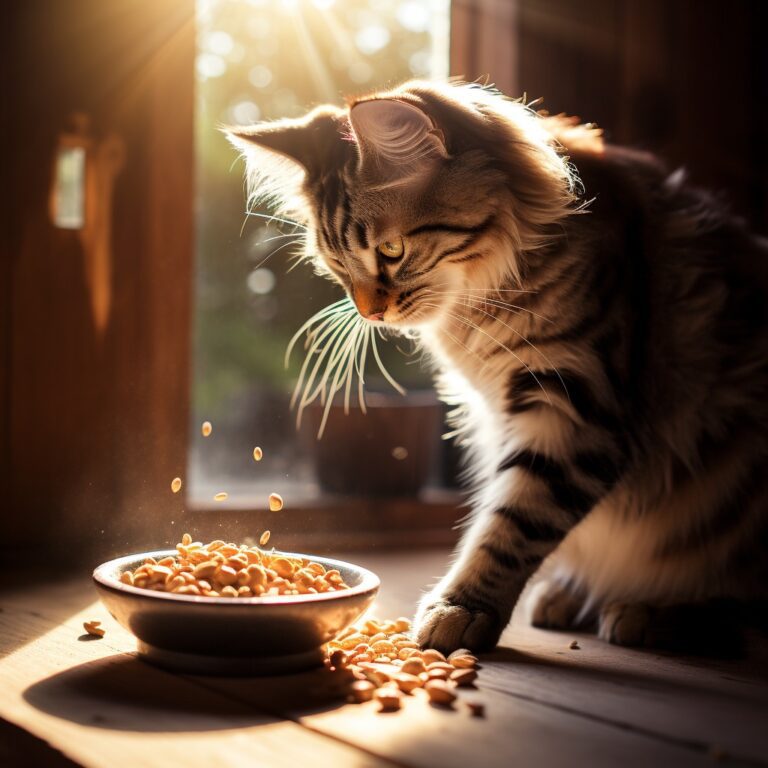
Understanding Cat Food Labels: Decoding the Food Code
As you stand in the pet food aisle, faced with rows of colorful cat food bags, you might feel like a codebreaker trying to decipher a secret language. But fear not, fellow cat parent, for understanding cat food labels isn’t as daunting as it may seem.
AAFCO: The Guiding Light
The Association of American Feed Control Officials (AAFCO) is like the nutritional superhero of the pet food world. They establish guidelines for pet food labeling, ensuring that the information you see is accurate and consistent.
One of the most important things to look for on a cat food label is the AAFCO statement. This statement should indicate whether the food is complete and balanced for a specific life stage, such as kitten, adult, or senior. It should also specify whether the food is for maintenance or growth and reproduction.
Decoding AAFCO Phrases
AAFCO uses specific phrases to describe the nutritional adequacy of cat food. Here’s a quick guide to deciphering these phrases:
- “Complete and balanced” means that the food contains all the nutrients your cat needs in the right proportions.
- “For growth and reproduction” means that the food is formulated to meet the higher nutritional needs of kittens and pregnant or nursing cats.
- “For maintenance” means that the food is suitable for adult cats that are not actively growing or reproducing.
- “Nutritionally adequate” means that the food has been tested and found to meet the nutritional requirements of cats as established by AAFCO.
Crude Protein and Fat Levels: Navigating the Numbers
The guaranteed analysis section of a cat food label provides information about the minimum and maximum levels of crude protein and crude fat in the food. This information is helpful in understanding the overall nutritional profile of the food.
When evaluating crude protein levels, it’s important to consider the type of food. Wet food contains more moisture, so the crude protein percentage will be lower than in dry food. For example, a wet food with a crude protein level of 7% may actually provide the same amount of protein as a dry food with a crude protein level of 25%.
As for crude fat levels, look for a food that provides a minimum of 9% crude fat for kittens and 5% for adult cats. This will ensure your cat is getting the energy and essential fatty acids they need.
Remember, cat food labels are just one piece of the puzzle when it comes to choosing the right food for your cat. Always consult your veterinarian for personalized recommendations based on your cat’s individual needs and health status.
Protein in Cat Food: A Deeper Dive
We’ve established that protein is the cornerstone of a healthy cat diet. But how much protein does your cat really need? And what are the potential consequences of too much or too little protein? Let’s delve deeper into the protein puzzle.
AAFCO Minimum vs. Optimal Protein
The AAFCO guidelines recommend a minimum crude protein content of 26% for adult maintenance diets and 30% for growth and reproduction diets. These minimum levels are essential for ensuring your cat’s basic nutritional needs are met.
However, research suggests that cats may thrive on higher protein levels, especially those with active lifestyles or those prone to urinary tract infections. Some experts recommend protein levels closer to 40-50% for optimal health.
Research Insights on Cat Protein Intake
Studies have shown that cats fed high-protein diets tend to have leaner body mass, stronger bones, and a healthier immune system. They may also experience reduced hairball formation and improved digestive function.
While high-protein diets can be beneficial for many cats, it’s important to consult your veterinarian before making any significant changes to your cat’s diet. They can assess your cat’s individual needs and health status and recommend the appropriate protein level.
Protein Allergies and Kidney Health
While protein is essential for cats, some cats may develop protein allergies or experience kidney problems. If you notice any signs of an allergic reaction, such as skin irritation, itching, or vomiting, consult your veterinarian immediately.
For cats with kidney disease, protein intake may need to be restricted to reduce the workload on the kidneys. Your veterinarian can provide guidance on the appropriate protein level for your cat’s specific condition.
Protein: Striking the Right Balance
In the world of cat nutrition, protein is a balancing act. Too little can lead to health problems, while too much can put unnecessary strain on the kidneys. The key is to work with your veterinarian to find the optimal protein level for your cat’s individual needs and health status.
By understanding the importance of protein and making informed choices about your cat’s diet, you can help them maintain a healthy weight, build strong muscles, and enjoy a long, healthy life.
Fat in Cat Food: Exploring Varieties
As we’ve discussed, fat is another essential nutrient for cats, providing energy, supporting nutrient absorption, and maintaining healthy skin and coat. But not all fats are created equal. Let’s explore the different types of fats and their importance for your feline friend.
Essential Fatty Acids: The Building Blocks of Health
Omega-3 and omega-6 fatty acids are essential for cats, as their bodies cannot produce them on their own. These fatty acids play a crucial role in various bodily functions, including:
- Skin and coat health: Omega-3s promote healthy skin and a shiny coat, reducing dryness and flakiness.
- Wound healing and inflammation: Omega-3s aid in wound healing and reduce inflammation throughout the body.
- Brain and eye function: Omega-3s contribute to optimal brain and eye function, supporting cognitive health and vision.
Sources of Fat in Cat Food
Animal fats are the primary source of fat in cat food, providing both energy and essential fatty acids. Common animal fat sources include:
- Chicken fat: A rich source of omega-6 fatty acids
- Beef fat: Provides both omega-6 and omega-3 fatty acids
- Fish oil: An excellent source of omega-3 fatty acids
Plant-based fats can also be found in cat food, but they do not provide the same level of essential fatty acids as animal fats. Soy oil, sunflower oil, and canola oil are common plant-based fats used in cat food.
Crude Fat Levels and Cat Requirements
The AAFCO guidelines recommend a minimum crude fat content of 9% for kittens and 5% for adult cats. However, some experts suggest that higher fat levels may be beneficial for cats, especially those with active lifestyles or those prone to urinary tract infections.
Meeting AAFCO Minimum vs. Tailored Fat Intake
While meeting the AAFCO minimum crude fat requirements is essential, it’s important to consider your cat’s individual needs and activity level. Cats with higher energy demands may require more fat in their diet to support their activity.
Addressing Weight Management
If your cat is prone to weight gain, managing their fat intake is crucial. Opt for lean protein sources and lower-fat cat food options. Consult your veterinarian for personalized recommendations on weight management and appropriate fat levels for your cat.
Fat: An Essential Nutrient
Fat plays a vital role in your cat’s overall health, providing energy, supporting nutrient absorption, and maintaining healthy skin and coat. By understanding the different types of fats and their importance, you can make informed choices about your cat’s diet to ensure they receive the essential nutrients they need to thrive.
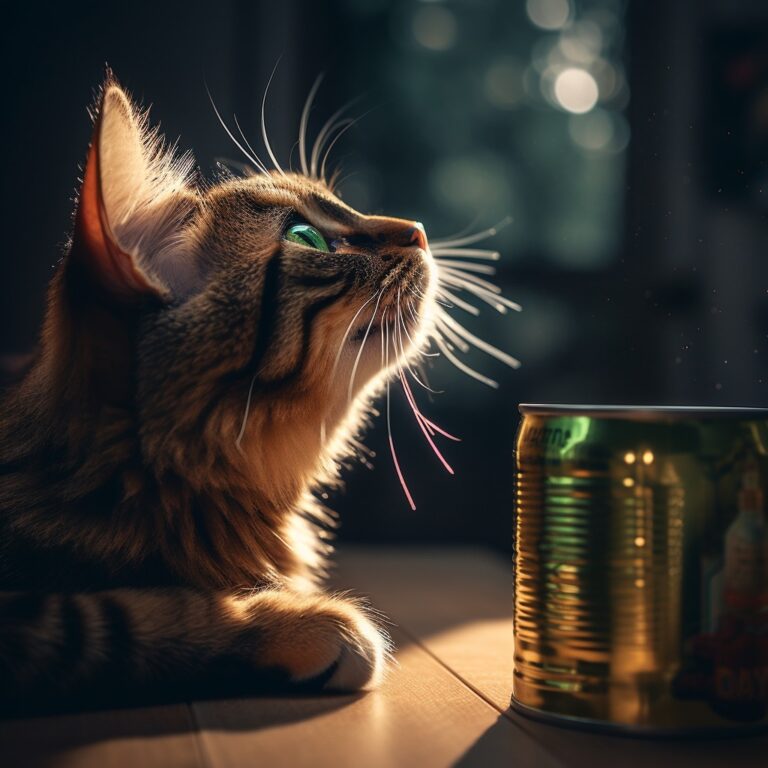
Carbohydrates: Navigating the Controversy
Carbohydrates, the energy-providing macronutrient that fuels our bodies, have often been the subject of heated debates, especially in the realm of cat nutrition. While cats do require some carbohydrates for energy, their natural diet consists primarily of animal protein and fat, with very little carbohydrates.
A Cat’s Natural Diet: Evolutionary Aspects
Cats, as obligate carnivores, have evolved to thrive on a diet high in protein and fat, reflecting their ancestral hunting instincts. Their digestive systems are not optimally equipped to process large amounts of carbohydrates, which can lead to various health issues.
Impact of High-Carb Diets on Cats
Excessive carbohydrate intake in cats can lead to weight gain, increased blood sugar levels, and even contribute to the development of diabetes. Obesity, a common problem among cats, can strain their joints, increase their risk of heart disease, and overall shorten their lifespan.
Check out our other articles on what we can and can’t include in our cat’s diets:
Managing Carb Intake: Striking the Balance
While some carbohydrates can be tolerated, minimizing their intake is crucial for feline health. Opt for cat food with lower carbohydrate content, aiming for around 2-10% carbohydrates in the dry matter.
Choosing Wet Food for Lower Carb Intake
Wet food typically contains significantly lower carbohydrate levels compared to dry food. This is because wet food has a higher moisture content, reducing the space for carbohydrates. Switching to wet food can be a simple yet effective way to reduce your cat’s carbohydrate intake.
Remember, every cat is unique, and their dietary needs may vary. Consult your veterinarian to determine the optimal carbohydrate level for your cat based on their individual health status and activity level.
Vitamins in Cat Food: A Comprehensive Guide
Vitamins, those essential micronutrients, play a crucial role in maintaining your cat’s overall health and well-being. Just like us humans, cats require a variety of vitamins to support various bodily functions, from vision to immune function. Let’s delve into the world of cat vitamins and explore their importance for your feline friend.
Essential Vitamins and Their Functions
A balanced cat food should provide all the essential vitamins your cat needs to thrive. Here’s a breakdown of some key vitamins and their functions:
- Vitamin A: Supports vision, skin and coat health, and immune function.
- Vitamin B1 (Thiamin): Crucial for energy production and nerve function.
- Vitamin B2 (Riboflavin): Promotes healthy skin, coat, and energy metabolism.
- Vitamin B3 (Niacin): Aids in energy production and maintaining healthy skin and nerves.
- Vitamin B6 (Pyridoxine): Plays a role in protein metabolism and red blood cell formation.
- Vitamin B9 (Folic Acid): Essential for cell growth and division, particularly important for pregnant cats.
- Vitamin B12 (Cobalamin): Supports nerve function and red blood cell formation.
- Vitamin C (Ascorbic Acid): While cats can produce some vitamin C, additional supplementation can support immune function and wound healing.
- Vitamin D: Promotes strong bones and teeth and helps absorb calcium and phosphorus.
- Vitamin E: Acts as an antioxidant, protecting cells from damage.
- Vitamin K: Essential for blood clotting and bone health.
Choline and Other Crucial Vitamins
Apart from the essential vitamins mentioned above, other vital micronutrients include:
- Choline: Supports brain function and helps prevent liver problems.
- Biotin: Plays a role in energy production and maintaining healthy skin and coat.
- Pantothenic acid: Involved in energy metabolism and hormone production.
Vitamin Supplementation: Balanced Diet vs. Supplements
A complete and balanced cat food should provide all the vitamins your cat needs. However, in some cases, your veterinarian may recommend vitamin supplements to address specific health concerns or deficiencies.
It’s crucial to consult your veterinarian before giving your cat any supplements, as excessive intake can lead to adverse effects. Your veterinarian can assess your cat’s individual needs and recommend the appropriate dosage and type of supplement, if necessary.
Remember, vitamins are essential for your cat’s overall health, but a balanced diet is the foundation of optimal nutrition. Consult your veterinarian to ensure your cat’s diet provides all the vitamins they need to live a long, healthy, and happy life.
Minerals in Cat Food: Building Strong Foundations
Just as a sturdy building requires a solid foundation, your cat’s health relies on a balanced intake of essential minerals. These micronutrients play a crucial role in various bodily functions, from building strong bones and teeth to maintaining a healthy heart and nervous system. Let’s delve into the world of cat minerals and explore their importance for your feline friend.
Vital Minerals and Their Roles
A complete and balanced cat food should provide all the essential minerals your cat needs to thrive. Here’s a breakdown of some key minerals and their functions:
- Calcium: Essential for strong bones and teeth, nerve function, and muscle contractions.
- Phosphorus: Works in conjunction with calcium for bone health and also supports energy production and cell growth.
- Potassium: Aids in muscle function, nerve transmission, and fluid balance.
- Magnesium: Plays a role in muscle function, nerve signaling, and blood sugar regulation.
- Sodium: Crucial for fluid balance, nerve function, and muscle contractions.
- Chloride: Helps maintain fluid balance, supports digestion, and aids in nerve function.
Understanding Chelated Minerals
Chelated minerals are minerals that have been combined with a carrier molecule, such as an amino acid, to make them more bioavailable. This means that the body can more easily absorb and utilize these minerals. Look for cat foods that contain chelated minerals for optimal nutrient absorption.
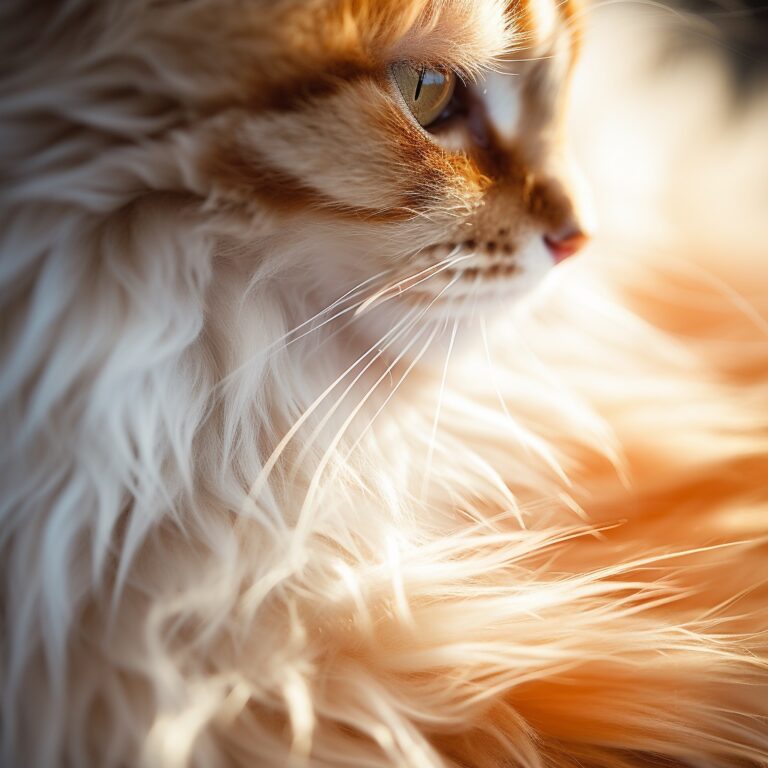
Ensuring Nutritional Adequacy: The Role of Cat Food
While some minerals can be obtained from natural water sources, a complete and balanced cat food is the primary source of these essential nutrients. Cat food manufacturers carefully formulate their products to meet the specific mineral requirements of cats at different life stages.
Monitoring Cat Health with AAFCO Standards
The Association of American Feed Control Officials (AAFCO) establishes guidelines for cat food labeling, ensuring that the mineral content is accurately represented. Look for the AAFCO statement on the cat food label to verify its nutritional adequacy.
AAFCO also has a guide on how to select the right pet food for your pet Here.
Remember, minerals are the building blocks of a strong and healthy cat. By providing your cat with a complete and balanced diet, you can help them maintain strong bones, a healthy heart, and a well-functioning nervous system.
Water: The Ultimate Cat Nutrient
As we journey through the world of cat nutrition, we often focus on the solid components of their diet – proteins, fats, carbohydrates, vitamins, and minerals. However, there’s one essential nutrient that often gets overlooked, yet it’s the most crucial for your feline friend’s well-being: water.
Significance of Water in Cat Diets
Water makes up about 60% of a cat’s body weight, and it plays a vital role in nearly every bodily function. It’s essential for regulating body temperature, transporting nutrients, lubricating joints, and removing waste products.
Metabolic Functions and Hydration
Water is the medium for all metabolic reactions in the body, from digestion to energy production. Without adequate water intake, these processes can become impaired, leading to various health problems.
Cats’ Preference for Moisture-Rich Foods
Cats are naturally adapted to conserving water, as their ancestors evolved in desert environments. This means they have a lower thirst drive than other animals, making it easy for them to become dehydrated.
Meeting Hydration Needs: Strategies for Success
To ensure your cat stays adequately hydrated, consider these strategies:
- Provide fresh, clean water at all times: Make sure your cat has access to multiple water bowls placed in different areas of the house.
- Clean water bowls regularly: Stagnant water can harbor bacteria, so wash your cat’s water bowls daily using mild soap and water.
- Encourage water intake with wet food: Wet food contains about 70% moisture, making it an excellent way to increase your cat’s water intake.
- Consider adding a water fountain: The sound and movement of flowing water can entice cats to drink more.
Remember, water is the foundation of good health for all living beings, and your cat is no exception. By providing your feline friend with easy access to fresh, clean water, you’re ensuring they have the essential nutrients they need to maintain a healthy, hydrated body and thrive for years to come.
Homemade Cat Food: A Risky Venture?
The allure of homemade cat food is undeniable. The idea of crafting your cat’s meals from scratch, using only the freshest, most wholesome ingredients, seems like the ultimate expression of love and care. However, before embarking on this culinary adventure, it’s crucial to weigh the potential benefits against the inherent risks.
AAFCO-Approved vs. Homemade Diets: Striking the Balance
AAFCO (Association of American Feed Control Officials) establishes rigorous guidelines for commercial cat food formulations, ensuring that they meet the nutritional needs of cats at different life stages. These guidelines are based on extensive research and scientific evidence.
While homemade cat food can provide fresh, whole ingredients, replicating the precise nutrient balance of AAFCO-approved food is a complex and challenging task. Even minor imbalances in essential nutrients can have detrimental effects on your cat’s health.
Risks and Challenges of Homemade Cat Food
The potential risks of homemade cat food include:
- Nutritional Imbalances: Inadequate levels of essential nutrients can lead to a range of health problems, from stunted growth and weakened immune systems to bone deformities and digestive issues.
- Contamination Risks: Raw meat, eggs, and dairy products can harbor harmful bacteria, such as Salmonella and E. coli, which can cause serious illness in cats.
- Overcooking or Undercooking: Overcooking destroys essential nutrients, while undercooking can leave harmful bacteria alive.
- Inconsistent Recipes: Replicating the same nutrient balance every time you prepare homemade cat food is extremely difficult.
Conclusion and Resources: Seeking Guidance
If you’re considering preparing homemade cat food, consulting with a veterinary nutritionist is essential. They can assess your cat’s individual needs and provide tailored recipes and guidance to minimize the risks.
Reliable resources, such as the American College of Veterinary Nutritionists, can connect you with qualified veterinary nutritionists in your area.
Remember, while homemade cat food can seem like a loving gesture, it’s important to prioritize your cat’s health and well-being. AAFCO-approved cat food provides a safe and balanced source of nutrition, ensuring your feline friend receives the essential nutrients they need to thrive.
As we conclude our exploration of cat nutrition, it’s evident that understanding your cat’s dietary needs is a crucial step in ensuring their lifelong health and happiness. From the essential building blocks of proteins and fats to the micronutrient powerhouses of vitamins and minerals, each nutrient plays a vital role in maintaining your cat’s well-being.
Navigating the world of cat food can be a daunting task, with a plethora of brands, formulas, and nutritional claims vying for your attention. However, by arming yourself with knowledge and seeking guidance from your veterinarian, you can make informed choices that align with your cat’s specific needs and preferences.
Remember, your cat’s diet is an investment in their future. By providing them with a balanced and nutritious food source, you’re setting them up for a life filled with vitality, playfulness, and companionship. So, embark on this journey of nutritional wellness and watch your feline friend flourish under your care.

Cat-Friendly Gardening: Creating a Safe Haven for Your Feline Friends
Table of Contents Introduction Hey there, fellow feline enthusiasts! 🐾 Welcome to a space where your garden becomes not just a patch of green but
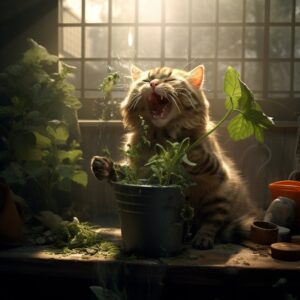
From Lilies to Sago Palms: Protect Your Cat from These 10 Toxic Plants
Table of Contents Introduction: Keeping Your Furry Friend Safe from Toxic Plants Hey there, fellow cat lovers! We all know our feline companions can be

Cat Nutrition 101: Decoding Labels & Essential Nutrients A-Z!
Table of Contents Introduction As a cat owner, you want nothing but the best for your furry feline friend. And that includes providing them with
